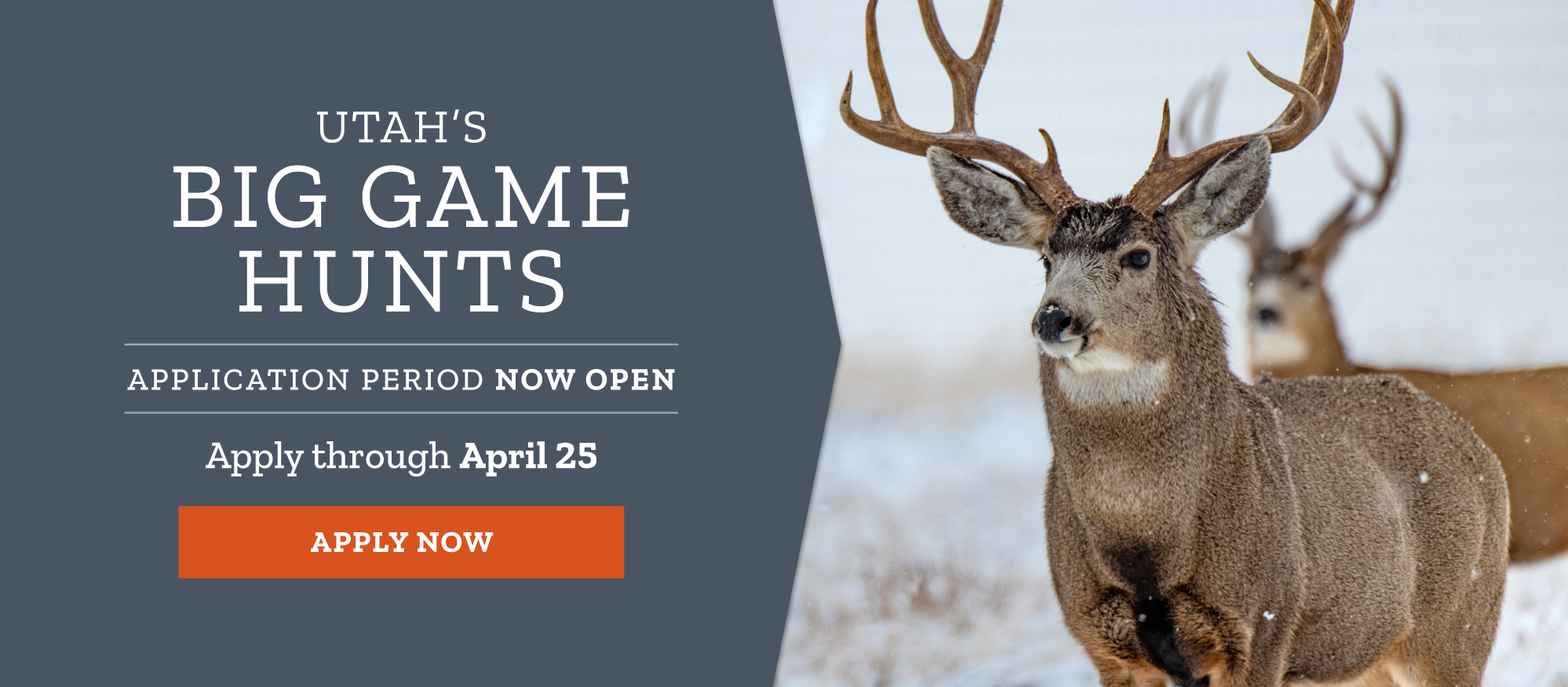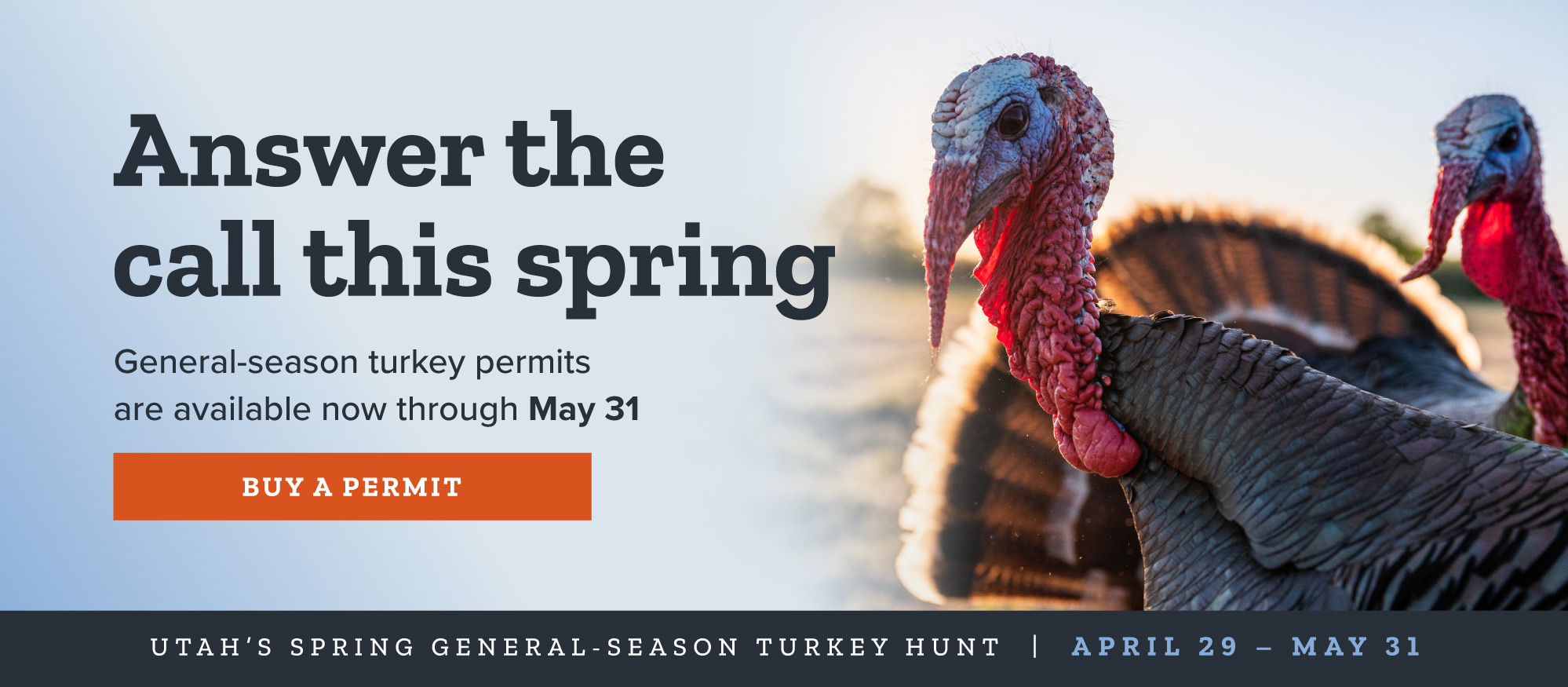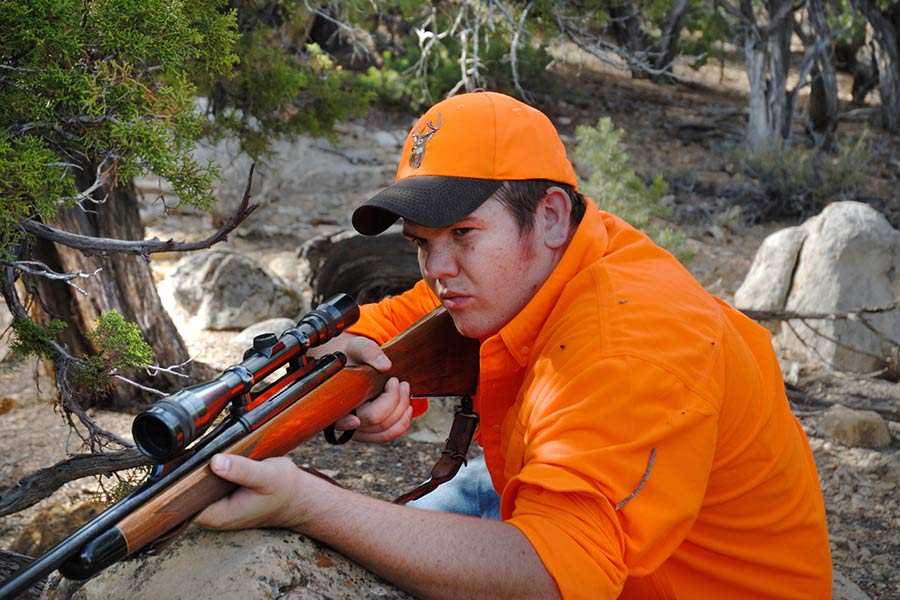Tips to help hunters have success during the 2020 Utah deer, elk hunts
Salt Lake City — Whether you are a first-time hunter or a seasoned veteran, it's always a good idea to get a refresher on things that can help you be successful during your hunt. While a large part of the hunting tradition is simply the opportunity to get outdoors and spend time with family members or friends, it's an added bonus to come home with some locally harvested meat for your freezer.
Two general-season archery hunts — for bull elk and buck mule deer — begin Saturday, Aug. 15 and run until Sept. 11. The general-season any legal weapon elk hunt runs from Oct. 3–15, and the general-season any legal weapon deer hunt runs from Oct. 17–25.
Utah Division of Wildlife Resources biologists estimate that Utah's deer populations have seen a decrease in the past year, primarily due to drought conditions in the spring, summer and fall of 2018, followed by a heavy winter in 2019. Elk populations are estimated to have a slightly decreasing trend, but are fairly stable.
Recent projects to help big game populations
DWR biologists are continuously working to better manage and help big game populations. Here is a look at some of those projects over the last several years:
- From November 2019 to March 2020, the DWR and its partners captured 1,433 big animals (971 deer, 117 elk, 21 bison, five moose, 190 bighorn sheep and 129 pronghorn) across Utah. These captures take place so biologists can perform health assessments and place GPS collars on the animals to learn more about their survival and migration patterns. These studies help biologists determine limiting factors for a population, which allows them to implement management actions such as habitat projects to improve winter and summer feeding ranges for big game.
- In addition, as part of a survival study to learn more about the primary causes of death for newborn deer fawns and elk calves, DWR biologists, in partnership with researchers from Brigham Young University, captured and collared 107 newly born deer fawns and 44 elk calves this past spring. When one of the collars emits a mortality signal — indicating an animal has died — the biologists can quickly find the animal and determine a cause of death. Determining the cause of mortality allows biologists to address factors that are limiting population growth.
- From July 2019 to July 2020, biologists and partners also installed or repaired 53 guzzlers, 48 of which are for big game. Guzzlers are large devices that catch and store water from snow and rain. They provide drinking water for wildlife and are especially important during hot, dry summers.
- From July 2018 to July 2019, DWR habitat biologists improved 199,408 acres of habitat for wildlife, including big game. This was done using various restoration methods such as removing invasive plants; planting beneficial feed such as sagebrush, grasses and bitterbrush; restoring aspen trees to landscapes; repairing and restoring eroded streams and rehabilitating an area after wildfires. For the past three years, an average of 170,200 acres of wildlife habitat has been restored each year.
"As an agency, we strive to do everything we can to help big game and other wildlife populations remain healthy throughout Utah," Big Game Coordinator Covy Jones said. "Whether you are a hunter or wildlife watcher, we want all Utahns to be able to enjoy the incredible animals that we have here in the state."
If you are planning to hunt deer or elk in Utah this fall, here are some tips to help you be successful during the archery and rifle hunts:
Hunt away from the road
If you are hoping to harvest a deer or elk this fall, make sure you are hunting in areas away from the road.
"Elk avoid roads, so especially when you are hunting elk, get off the road," Jones said. "Get out and do some hiking and scout to see where these animals are before the hunt begins."
Look for rugged terrain
When it comes to deer, mature bucks and does are not together during the August archery hunts. So if you are seeing a lot of does in an area, it's a sign that you should probably move to a different spot. Does have to care for their fawns, so they typically prefer areas where there is a lot of water and the terrain is more gentle, like in rolling aspen groves.
"Bucks will gather in herds of little 'bachelor groups,' and they like more rugged mountain terrain," Jones said. "So, if you are looking for a bigger buck, look for terrain that is harder to access."
Pay attention to the direction of the wind
Another tip for archery hunters is to know the direction of the wind. That way, you can make adjustments and prevent your scent from reaching the animals before you get within range. As the sun heats the ground, the wind direction changes. For example, wind almost always blows up canyons in the morning and down canyons in the afternoon.
To know the direction the wind is blowing, you can buy an inexpensive item called a wind or breeze checker. Releasing powder from the checker will let you know the direction the wind is blowing. Once you've determined the direction the wind is blowing, approach the deer from the side (a 90-degree angle) rather than approaching it with the wind in your face (at a 180-degree angle). If you approach with the wind in your face and then the wind shifts and starts blowing from your back, it'll blow your scent directly to the deer. Approaching from the side lessens the chance that a wind shift will carry your scent to the deer.
Be prepared for the weather and possible emergencies
Hunters should also be prepared for any weather and should always have a first-aid kit and plenty of water with them. The weather in Utah's mountains can change very quickly and go from sunny to snowing in a matter of minutes, so hunters need to be prepared with adequate clothing and supplies.
Use binoculars and be stealthy
Having success during the archery hunt requires stealth and patience. For example, if you're going to spot and stalk, don't walk through the woods, hoping to find a deer without spooking it. Instead, spend time looking through binoculars at an area to find deer and locate where they're bedding. Then, after they've bedded down, plan your stalk, remaining quiet and doing all you can to approach the deer at an angle that keeps your scent from reaching the deer.
"Stealth and knowing the wind direction are more important for archery hunters than for rifle hunters, as archery hunters need to get closer to the animal to be effective," Jones said. "It all depends on the hunter and their skill level, and equipment, but typically, most bows have sights that allow for shooting at 60 yards or less. And typically, the accuracy of most rifles starts to decline between 300–400 yards. I recommend not trying to 'overshoot' with your equipment and to stick with a distance where you are comfortable. You should also always know what is beyond your target before taking a shot."
Do your research before heading out
It is also a good idea to visit the Utah Hunt Planner before heading out into the field. This great online resource includes notes from the biologists who manage the various hunting units across the state, as well as general information about the units and safety and weather items. You can see information about the number of bucks on the units, compared to the number of does. You'll also find maps that show the units' boundaries, which land is public and private, and the various types of deer habitat on the unit.
Harvesting the meat
After you harvest a deer or elk, don't hang it in a tree to try to cool the meat. The hot temperatures (especially during the archery hunts) can spoil it. Plus, hanging a deer or elk in a tree might draw bears into your campsite. Instead, cut the animal up in the field and remove the meat from the bone. After removing the meat, place it in a cooler.
"Dry ice can be used to cool the meat quickly and keep it cool for a prolonged period," Jones says. "You want to keep the meat as cool as possible until you can process it and get it into your freezer."
"Hunting should be fun, and you should enjoy it. It's a great time to see Utah's amazing wildlife and to make memories with your family and friends. Get outdoors this fall and have an adventure or two in our beautiful state."

















